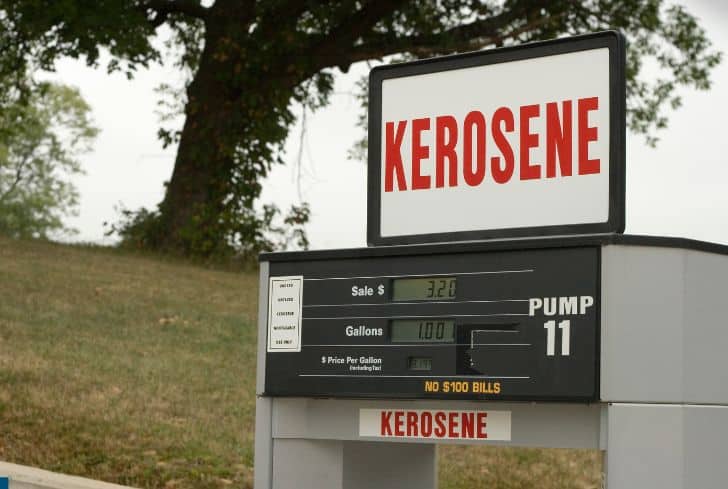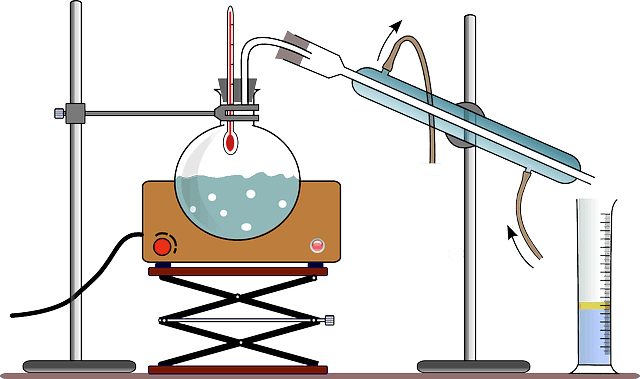Is Contact Paper Waterproof? (Answer Inside)

Contact paper is an adhesive paper that can be used to cover shelves, cupboard doors, and a variety of other surfaces. It usually comes in roll form and is a great way of decorating your indoors at an affordable price.
Contact paper is very easy to cut, apply, and remove, which is why it’s often used in creative and DIY projects. Now, it’s even being used to make laptop skins and protective book covers.
But can contact paper survive being exposed to water? We are going to find that out in this article, along with several other issues related to it: the kind of surfaces and places where we can use contact paper, the durability of its material, and its advantages.
Is Contact Paper Water-resistant?
Yes, contact paper is water-resistant. This is because it is made up of vinyl, which is waterproof. But this does not mean that contact paper is absolutely immune to damage. A contact paper has a decorative surface on one side and an adhesive material on the other. Most adhesives used to make contact paper are water-based, so when water gets behind the vinyl surface, it damages the adhesive and then the entire installation.
Over time, it’s common for the contact paper to loosen up, especially around the edges. This allows the water to get through, and it ultimately damages the paper. Incorrect installation can aggravate this problem further. But contact paper is still an excellent way of decorating, and later we are going to look at the different surfaces on which you can use it.
Why is Contact Paper Water-resistant?
Contact paper is water resistant because it is made up of PVC (polyvinyl chloride), often simply called vinyl. PVC does not have OH groups, and therefore, it cannot form bonds with water molecules. But, as said earlier, contact paper is not absolutely immune to water. It would be more correct to say that it is water resistant—able to resist water penetration to a considerable degree—rather than waterproof (impervious to water).
Sometimes, water can seep from loose edges. At other times, hot water or humidity can damage the vinyl surface and that can allow water to seep through the fault lines/holes. But of course, there are ways in which you can properly install contact paper and minimize the issues of water damage.
Can You Put Contact Paper in the Shower?
Yes, you can use contact paper in your bathroom. For example, you might not like the color of your tiles or may be looking for a change. In such cases, you can easily apply contact paper that will make your bathroom much more beautiful. But keep in mind that water from the shower can damage your contact paper over a while.
However, there are some issues with using contact paper in the shower. First, there are grooves or spaces between tiles—unlike the flat surfaces of kitchen counters or cupboard tops—, so it might be difficult to put up contact paper. Second, hot water and steam from the shower can damage the contact paper faster.
The contact paper will work well in those areas of the bathroom where there is low water contact, such as in countertops, windows, etc. But where there’s regular water contact, as in the tiles of the bath or shower, the contact paper may not last long.
The great thing about contact paper is that it is inexpensive. It can easily be tested and replaced whenever necessary. So, if your tiles are worn out or damaged, you can simply try using contact paper and see if it works well.
Can You Put Contact Paper in a Sink?
Yes, you can use contact paper around a sink, whether it’s in your bathroom or in your kitchen. The countertops in these areas can be tricky since there are lots of things here (stove in the kitchen, bathroom faucet, etc.). Since contact paper is easy to cut, you can get it into any shape.
But, as we have been discussing, in areas where there is excessive contact with water, the contact paper might get damaged quickly. The water seeps through the gaps or edges and dissolves the adhesive, ultimately damaging the entire installation. There are a few steps that you can take to make sure you get the most out of your contact paper.
Ensure that the adhesive is properly in place and that there are no bubbles after it’s on the surface. You can use a ruler or something like a credit card to smoothen the contact paper. To prevent water penetration, you can also seal the edges of the contact paper with silicone caulk or sealant. You can check out Dalou’s video on how she used contact paper in his bathroom sink.
Can You Use Contact Paper as Wallpaper?
Yes, contact paper not only serves as a great way to decorate countertops but can also be used to beautify your walls. Rachel Teodoro used it to decorate her master bedroom closet, and it looked gorgeous.
However, since contact paper is not exactly designed for this, you might find it difficult to get the designs that you want. But on the plus side, the contact paper is much more affordable. Teodoro mentions that she got 18 rolls of contact paper for half the price of what one Joanna Gaines wallpaper roll costs. Moreover, contact paper peels off easily, so it’s easy to remove it without leaving any trace on the wall.
Advantages of Using Contact Paper
1. Affordable
The best thing about contact paper is its affordability. It gives you a choice to beautify your surfaces without paying a huge amount. If your kitchen or bathroom surfaces are getting old and you don’t want to spend a fortune on renovation, you can easily get some contact papers and give them a new look.
2. Durable
If you have installed the contact paper properly, it can easily last for years. This is especially true for dry areas; without the damaging influence of moisture, your surfaces will continue to look amazing for a long time. For most people, contact paper can last from two to five years when installed properly, and it can last even longer if the item is rarely used.
3. Easily Removable
Contact paper is completely removable. You can easily play around with different kinds of looks on your countertops or surfaces. If something doesn’t work out or is getting too old, you can easily replace it. This is also what makes contact paper so useful for renters; it’s completely reversible and you can remove all traces of the aesthetic transformations you made.
4. Multi-purpose
Contact paper can be used on lots of different surfaces and for a range of purposes. You can use it to cover kitchen countertops, especially when you are not looking for a full-scale renovation and want something affordable.
You can put it on bathroom windows or shower doors for privacy. Maybe you need a backsplash for your bookshelf. Or you want to change the look of your floors. The possibilities are endless.
Can Contact Paper Stick to Plastic?
Yes, but it depends on the type of plastic upon which you are trying to stick the contact paper. Not all plastics are the same; some may get damaged by solvents while others might trap moisture.
For example, polycarbonates are used in most of the house, office, and auto equipment. It is resistant to weathering and impact, which is why it is most commonly used in car bumpers. However, it is prone to trapping moisture. So, if you put contact paper on it, it can lead to the formation of water bubbles, which means that the paper won’t hold properly.
Other kinds of plastic, like Polyvinylchloride, are much better for contact paper. PVC is often used in parts of doors and instrument panels. You only need to consider the hardness of this material; hard PVC will easily allow you to apply the contact paper, while soft PVC might cause some issues.
Can You Paint Over Contact Paper?
Yes, you can paint over contact paper, but you need suitable paint. Use a quality primer-sealer because ordinary oil/latex paints will not stick very well on the paper. It’s important to consider the chemical composition of the primer you are using.
Your paint should not adversely react with the plastic or seep through it to damage the adhesive. You can begin with a stain-killing primer, which sticks to pretty much all kinds of clean surfaces. This would give you a great painting surface.
Also, make sure that the contact paper is clean before painting, removing any stains of oil or grease. Even the most special kind of paint will not hold well if it’s applied over dirt or oil. Clean and dry the contact paper before painting.
Conclusion
The answer to our main question is yes; contact paper is water resistant. It serves as a great decorator for all kinds of surfaces—countertops, walls, doors, etc. But, in areas where there is excessive contact with water, the contact paper might get damaged quickly. Contact paper works perfectly in dry/low-water contact areas, and given its advantages, it’s one of the best ways to beautify your indoors.





